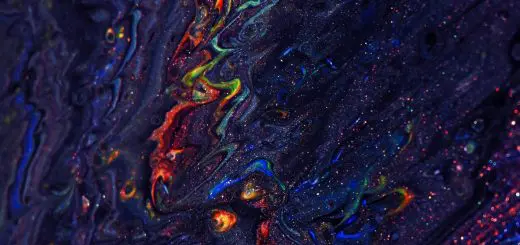Evil Eye in Art and Literature: Interpretations

Looking for more amazing products? Check out our online store and explore our collection here! Happy shopping!
Before diving in, please note: This post is for informational purposes only. If you’d like to know more about how we approach topics, feel free to check out our friendly Disclaimer Page.
Hey there, amazing readers! 
We’re committed to delivering quality posts, and your support (even just sticking around despite the ads) means everything to us. So, bear with us, and thanks for helping us keep the good vibes rolling. Now, on to the fun stuff!
TRANSLATE BUTTON AT THE END OF THE ARTICLE
Introduction to the Evil Eye
The concept of the Evil Eye has a long and varied history, with its roots stretching back thousands of years.
Often portrayed as a curse or malicious gaze, the Evil Eye is believed to bring misfortune, injury, or even death to those it falls upon.
This belief is prevalent in various cultures around the world, each with its own interpretations and superstitions surrounding the Evil Eye.
From ancient civilizations to modern times, the Evil Eye continues to captivate the human imagination, inspiring countless works of art and literature that explore its dark and mysterious power.
Historical Depictions in Art
Artists throughout history have been fascinated by the concept of the Evil Eye, depicting it in various forms and styles.
From ancient Greek pottery to Renaissance paintings, the Evil Eye has been a recurring motif in art for centuries.
In these artworks, the Evil Eye is often portrayed as a sinister gaze or symbol, with the power to harm those who come under its influence.
These depictions serve not only as warnings against envy and jealousy but also as powerful symbols of protection against its malevolent effects.
Symbolism in Literature
In literature, the Evil Eye is often used as a potent symbol of jealousy, envy, and malevolence.
Writers across different cultures have incorporated the concept of the Evil Eye into their works, using it to explore themes of power, fate, and the darker aspects of human nature.
From ancient myths and legends to modern novels and short stories, the Evil Eye continues to play a significant role in shaping narratives and characters, adding depth and intrigue to the stories they inhabit.
Cultural Interpretations
The interpretation of the Evil Eye varies widely across different cultures, each imbuing it with its unique meanings and beliefs.
In some societies, the Evil Eye is seen as a powerful force that can bring harm and misfortune, while in others, it is viewed as a symbol of protection and warding off evil spirits.
These cultural interpretations shape the way people perceive and respond to the phenomenon of the Evil Eye, influencing everything from daily rituals to artistic expressions.
Evil Eye in Folklore
In folklore and mythology, the Evil Eye often appears as a curse or hex cast by a malevolent individual.
Stories of witches, sorcerers, and evil spirits possessing the power of the Evil Eye abound in folk tales from around the world.
These narratives serve as cautionary tales, warning against the dangers of envy, jealousy, and unchecked malevolence.
The Evil Eye is often depicted as a potent and dangerous force, capable of bringing ruin to those unfortunate enough to attract its attention.
Protection Against the Evil Eye
Given the perceived dangers of the Evil Eye, many cultures have developed various methods of protection against its influence.
Talismans, amulets, and charms are commonly used to ward off the Evil Eye and keep its malevolent gaze at bay.
These protective objects are often imbued with symbols of strength, power, and divine intervention, believed to repel the effects of the Evil Eye and safeguard individuals from harm.
Rituals and prayers are also employed to counteract the influence of the Evil Eye, with people seeking divine assistance in shielding themselves from its curse.
Psychological Impact
The belief in the Evil Eye can have a profound psychological impact on individuals, shaping their thoughts, behaviors, and perceptions of the world around them.
The fear of attracting the Evil Eye can lead to anxiety, paranoia, and excessive caution in daily life.
People may go to great lengths to protect themselves from its influence, resorting to superstitions and rituals to ward off potential harm.
The psychological burden of living in constant fear of the Evil Eye can take a toll on mental health, creating a sense of unease and vulnerability in those who believe they are at risk.
Modern Representations in Art
In contemporary art, the theme of the Evil Eye continues to resonate with artists seeking to explore themes of power, envy, and superstition.
From paintings and sculptures to installations and digital art, the Evil Eye serves as a versatile symbol that can be interpreted in myriad ways.
Modern artists often use the motif of the Evil Eye to comment on issues of surveillance, privacy, and societal control, drawing parallels between ancient superstitions and contemporary fears of being watched or judged.
Understand the Powerful Law of Karma and Its Impact – Explore Here!
The visual language of the Evil Eye remains a potent tool for artists looking to evoke feelings of unease, mystery, and intrigue in their viewers.
Superstitions and Beliefs
Superstitions surrounding the Evil Eye are prevalent in many cultures, with people taking precautions to avoid attracting its curse.
Common practices include wearing protective amulets, displaying talismans in homes and workplaces, and performing rituals to ward off the Evil Eye’s influence.
In some societies, certain gestures, words, or behaviors are believed to invite the Evil Eye, prompting individuals to be mindful of their actions and interactions with others.
While some dismiss these superstitions as mere folklore, others take them seriously, adhering to age-old traditions in the hopes of safeguarding themselves from harm.
Religious Perspectives
In various religious traditions, the concept of the Evil Eye holds significant meaning, often intersecting with beliefs in divine protection and spiritual intervention.
In Islam, for example, the Quran references the Evil Eye as a real and potent threat, prompting believers to seek refuge in prayer and supplication.
Similarly, in Christianity, the Evil Eye is viewed as a manifestation of sin and spiritual corruption, with believers urged to resist its temptations and keep their hearts pure.
Across different faiths, the Evil Eye serves as a reminder of the eternal struggle between good and evil, virtue and vice, light and darkness.
Famous Examples in Literature
Numerous works of literature have featured the Evil Eye as a central motif, weaving its ominous presence into the fabric of their narratives.
From Edgar Allan Poe’s "The Tell-Tale Heart" to J.K.
Rowling’s "Harry Potter" series, the Evil Eye has left its mark on some of the most iconic stories in literary history.
In these works, the concept of the Evil Eye is used to create tension, suspense, and psychological depth, adding layers of complexity to the characters and their motivations.
Whether as a symbol of guilt, paranoia, or supernatural power, the Evil Eye continues to captivate readers and writers alike, inspiring new interpretations and insights into the human psyche.
Conclusion and Final Thoughts
The Evil Eye remains a potent and enduring symbol in art and literature, reflecting humanity’s deep-seated fears and beliefs surrounding envy, jealousy, and malevolence.
From ancient myths and folklore to modern expressions in art and culture, the Evil Eye continues to intrigue and unsettle audiences with its mysterious power and ominous presence.
Whether viewed as a curse to be feared or a symbol to be revered, the Evil Eye offers a window into the darker aspects of human nature, inviting us to explore the complexities of fate, fortune, and the unseen forces that shape our lives.
As we navigate the ever-changing landscape of art and literature, the Evil Eye stands as a timeless reminder of our shared fears, desires, and vulnerabilities, challenging us to confront the shadows that lurk within and without.

The Enlightenment Journey is a remarkable collection of writings authored by a distinguished group of experts in the fields of spirituality, new age, and esoteric knowledge.
This anthology features a diverse assembly of well-experienced authors who bring their profound insights and credible perspectives to the forefront.
Each contributor possesses a wealth of knowledge and wisdom, making them authorities in their respective domains.
Together, they offer readers a transformative journey into the realms of spiritual growth, self-discovery, and esoteric enlightenment.
The Enlightenment Journey is a testament to the collective expertise of these luminaries, providing readers with a rich tapestry of ideas and information to illuminate their spiritual path.
Our Diverse Expertise
While our primary focus is on spirituality and esotericism, we are equally passionate about exploring a wide range of other topics and niches 

To ensure we provide the most accurate and valuable insights, we collaborate with trusted experts in their respective domains 
Our blog originally focused on spirituality and metaphysics, but we’ve since expanded to cover a wide range of niches. Don’t worry—we continue to publish a lot of articles on spirituality! Frequently visit our blog to explore our diverse content and stay tuned for more insightful reads.
Hey there, amazing reader! 
Check out our store here and take a peek at some of our featured products below! Thanks for being awesome!













